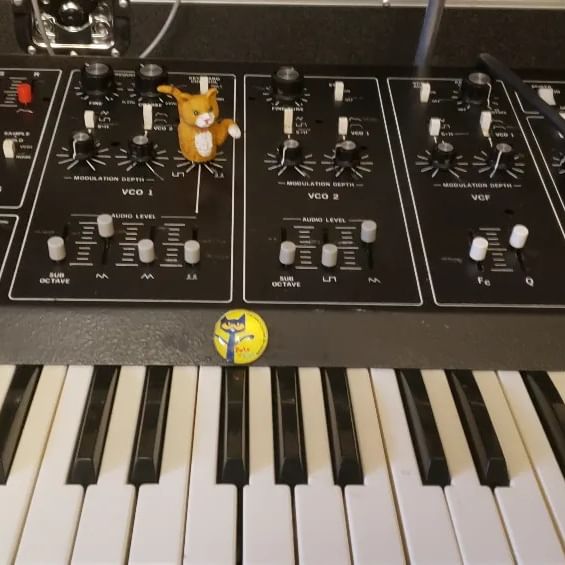
It looks like our friends over at Triangle Synth Party in North Carolina have some cats on their Octave CAT. A little figuring covers the pulse width knob of VCO 1, and a sticker sits just above F sharp.

We are celebrating our 500th episode of CatSynth TV! Hard to believe we have made so many of these, but we have and we’re still having fun with it.
This one features numerous synthesizers, including the Octave CAT, Pocket Gamelan, and various instruments from Arturia, Cherry Audio, Moog Music, Strymon, MOK, Buchla, Metasonix, Make Noise, and more. There is also an appearance by Sam Sam at about the 1-minute mark.
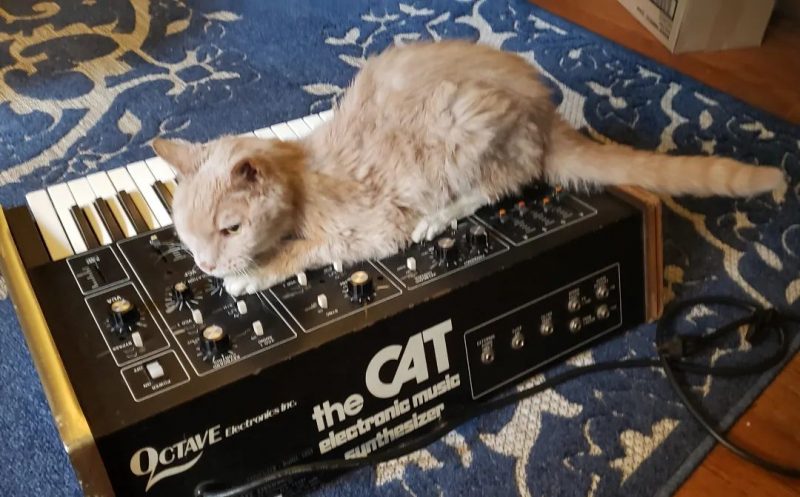
Chester sits atop the purrfect synth for any cat, the legendary Octave CAT. From doug_whoever on Instagram.
Happy International Cat Day from Chester and his new buddy.
https://www.instagram.com/p/Cvsy8YhvXpz/
You can see our detailed demo of the Octave CAT here at CatSynth HQ in this video
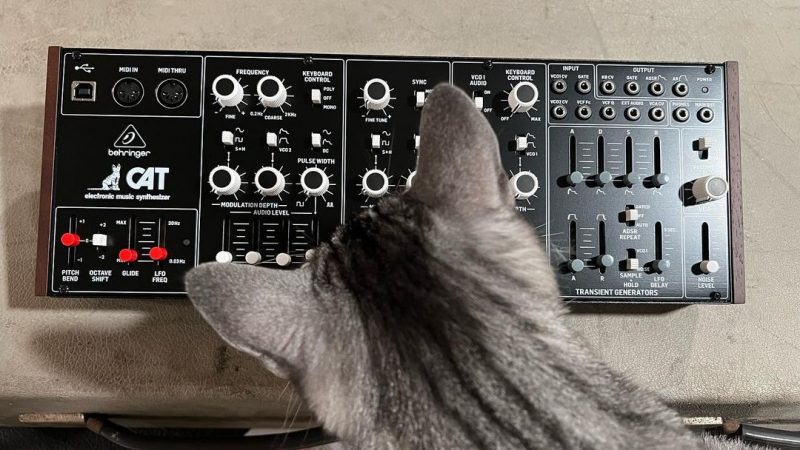
It’s always extra fun to have a “CatSynth Pic” with a “Cat Synth”. Haku inspects the Behringer CAT, a remake of the infamous Octave CAT. From eriksuperlazy on Instagram.
I suppose it was only a matter of time before this photo happened. And as usual, Haku tried to chew the knobs.
https://www.instagram.com/p/Cqmq5P9uQxx/
We at CatSynth have both the Behringer CAT and the original. You can see our demo/tutorial of the original here.
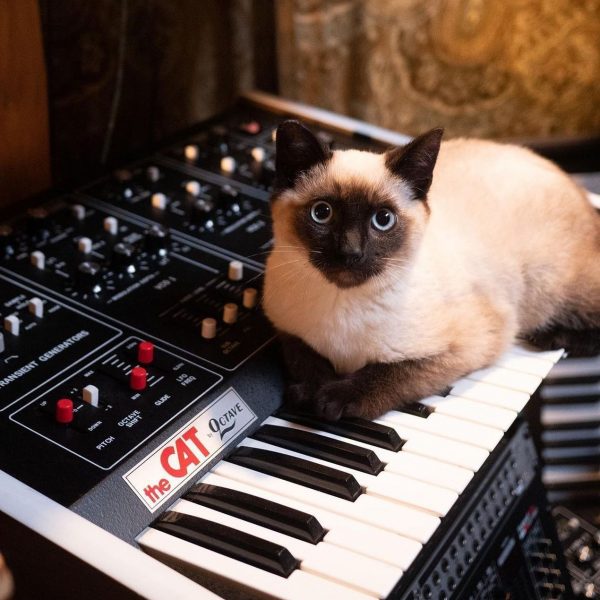
Two of my favorite local institutions, the Vintage Synthesizer Museum and the Cat Man of West Oakland, are back together again for this photoshoot featuring a beautiful siamese cat and the Octave CAT synthesizer.
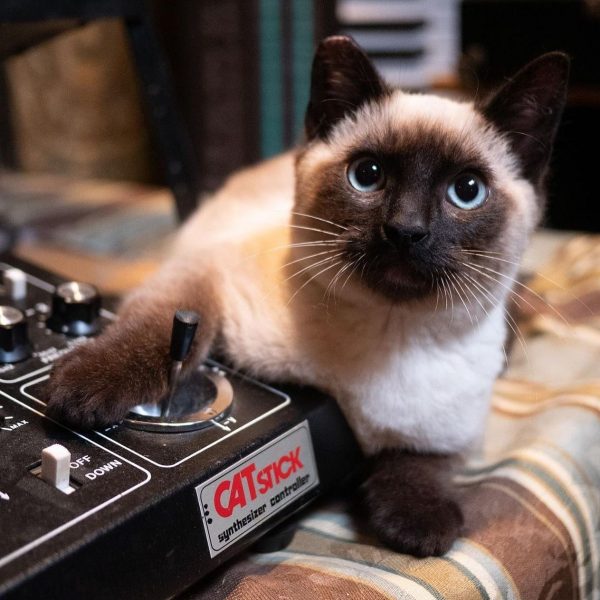
I particularly like seeing the CATStick, which I had a chance to play when I visited the Vintage Synthesizer Museum last year.
Some more adorable images of a Cat on a Cat 😸
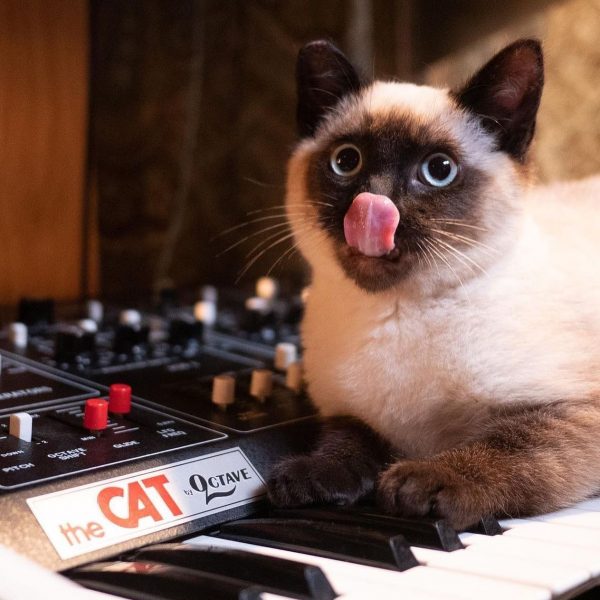
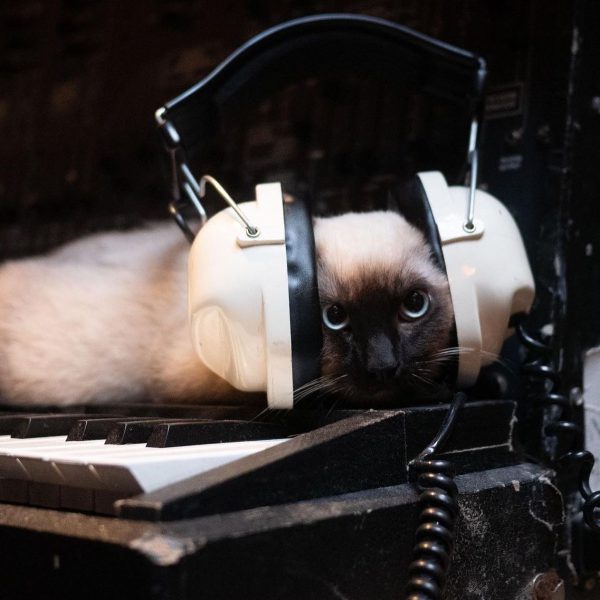
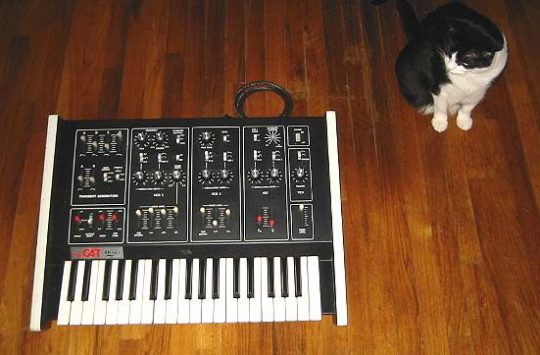
A cat contemplates its namesake synthesizer, the Octave CAT. From Doug Terrbone via Facebook.
Not surprisingly, we have an original Octave CAT of our own. In fact, it was the first vintage analog synth that I acquired, all the way back in 2005. And it’s a powerful mono synth, with multiple simultaneously waveforms and a sub oscillator. It probably needs some maintenance, but otherwise still runs great – just need to let the oscillators warm up.
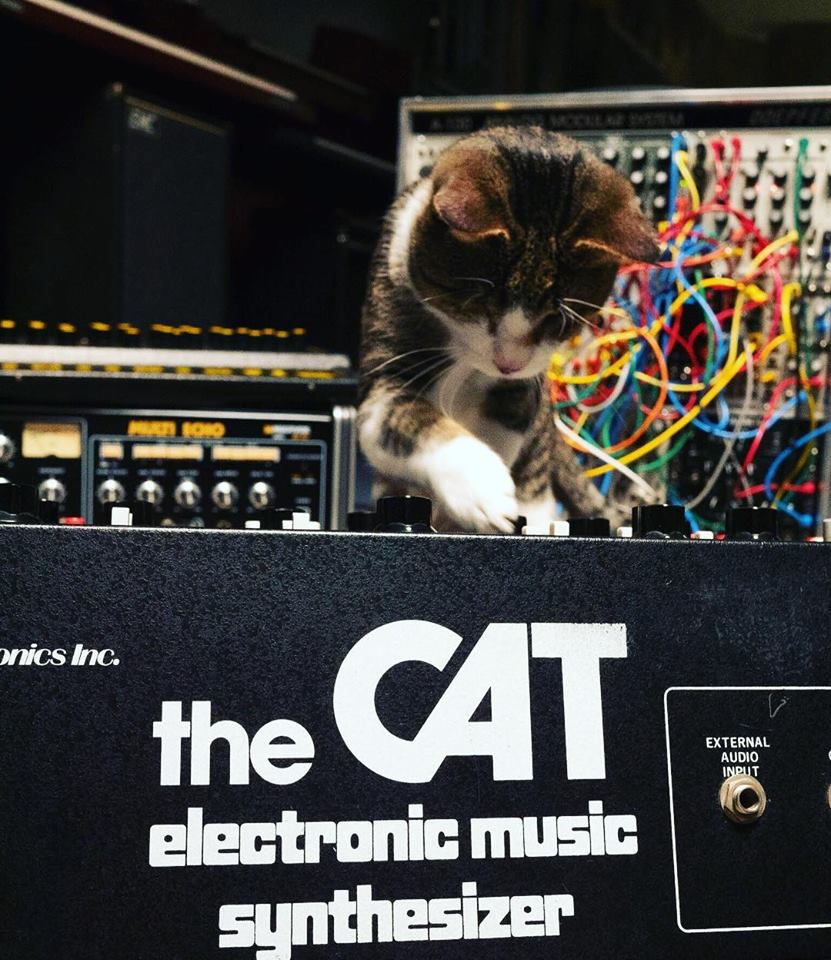
This about as “CAT Synth” a picture as one cat get. A cute cat playing an Octave CAT synthesizer. From the Vintage Synthesizer Museum on Facebook.
@catmanofwestoakland brought by Bud a few days ago for play time and modeling
😸
The Cat Man of West Oakland, like the Vintage Synth Museum, is a local treasure. We hope to feature more of them both in the near future.

Well, that’s quite an interesting pairing: dog sticker barking at The CAT – specifically, an Octave CAT synthesizer. Seen on matrixsynth.
This one recently came in to Thesis Audio for restoration.
“We took in an Octave CAT for restoration the other day that had this sticker added to the back. I like it!”
Anyone know what the source of the sticker?
I believe this is only the second time we have featured a dog in a synth in over twelve years.

A moody picture of Enid the cat posing with an Octave CAT synthesizer. Cat and CAT!
From suzieassaultrifle via Instagram.